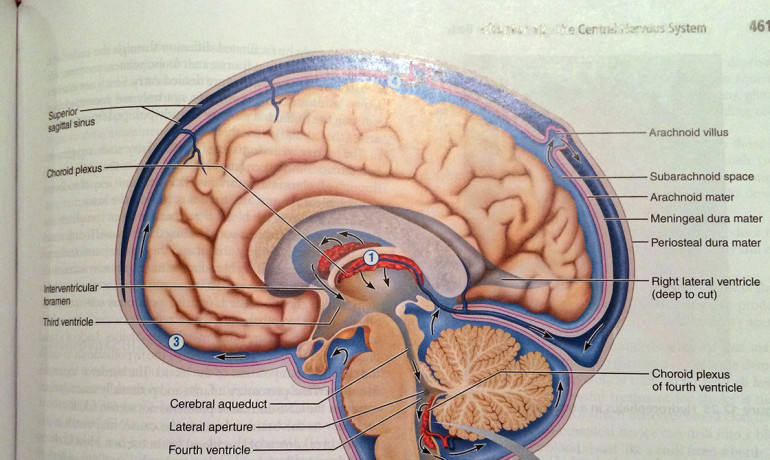For 140 years, scientists’ understanding of language comprehension in the brain came from individuals with stroke.
Based on language impairments caused by stroke, scientists believed a single area of the brain—a hotdog-shaped section in the temporal lobe of the left hemisphere called Wernicke’s region—was the center of language comprehension. Wernicke’s was thought to be responsible for understanding the meaning of single words and sentences, two separate and critical functions.
But scientists have updated and redrawn the traditional brain map of language comprehension based on new research with individuals who have a rare form of dementia that affects language, primary progressive aphasia (PPA).
The new research shows word comprehension is actually located in a different brain neighborhood—the left anterior temporal lobe, a more forward location than Wernicke’s. And sentence comprehension turns out to be distributed widely throughout the language network, not in a single area as previously thought.
The paper was published in the journal Brain.
“This provides an important change in our understanding of language comprehension in the brain,” says lead study author Marek-Marsel Mesulam, a neurology professor and director of Northwestern University’s Cognitive Neurology and Alzheimer’s Disease Center.
Knowing where language comprehension is located offers a more precise target for future therapies that could potentially protect or restore language function.
PEOPLE WHO HAD STROKES
Strokes cut off blood supply to regions of the brain and cause destruction of both neurons and fiber pathways passing through that region.
In the 1870s, a scientist named Carl Wernicke observed a specific region damaged by stroke and resulting language impairments. This area, consequently named Wernicke’s region, was identified as the seat of language comprehension.
“People who had strokes that affected Wernicke’s region couldn’t explain what a word such as umbrella meant,” Mesulam says. “Secondly, they had difficulty understanding sentence construction.
“If you said, ‘Put the apple on top of the book,’ even if they understood the meaning of apple and book, they wouldn’t be able to carry out the command because they can’t understand the construction of the sentence.”
PEOPLE WITH PPA
But Mesulam, the world’s leading expert in PPA, for years had been puzzling over the fact that his PPA patients with damage in Wernicke’s area did not have the word comprehension impairment seen in stroke patients. They still understood individual words. And their sentence comprehension was inconsistent; some understood sentences; some didn’t.
“It was becoming clear over the many years I saw these patients that there was some disconnect between what textbooks said and what we saw in our patients,” Mesulam says. “We did this study to analyze the discrepancy. The view of brain as seen from stroke did not match the view of the brain when seen from PPA.”
He and colleagues began a study of PPA patients, conducting quantitative MRI imaging of their brains and testing their language.
Northwestern scientist Emily Rogalski conducted the imaging in 72 PPA patients with damage inside and outside of Wernicke’s area. She measured cortex thickness in all of these areas.
Cortex thickness is an indirect measure of the number of neurons and brain health. Thinning of the cortex in PPA indicates the destruction of neurons by the disease.
WERNICKE’S AREA
Rogalski, a research associate professor, found PPA patients who lost cortical thickness in Wernicke’s area still could understand individual words and had varied impairment of sentence comprehension. None of these patients had the global type of comprehension impairment described in stroke patients with Wernicke’s aphasia.
Severe word comprehension loss was only seen in PPA patients who had diminished cortical thickness in a region of the brain completely outside of Wernicke’s area, in the front part of the temporal lobe. This part of the brain is not prone to the effects of stroke, so its role in comprehension had been missed in prior language maps.
The discrepancy between the traditional map of comprehension and what was seen in PPA can be explained by the different ways the two diseases injure Wernicke’s area.
In PPA, the neurodegenerative disease does not destroy the underlying fiber pathways that allow language areas to work together. But, in stroke patients, those critical highways passing through Wernicke’s had been blown up. So, the messages from other parts of the brain to the left anterior temporal lobe—the spot for word comprehension—were simply not getting through, Mesulam suspects.
“What is happening here is no different from the charting of galaxies in outer space,” Mesulam says. “You look through one kind of telescope, you see one picture; you look through another infrared telescope, you get another picture.
“We are all in this pursuit of how to piece together different perspectives to get a better sense of how the brain works.
“In this case, we saw a different map of language by comparing two different models of disease, one based on strokes that destroy an entire region of brain, cortex as well as underlying pathways, and the other on a neurodegenerative disease that attacks mostly brain cells in cortex rather than the region as a whole,” Mesulam adds.
Fuente: www.futurity.org
